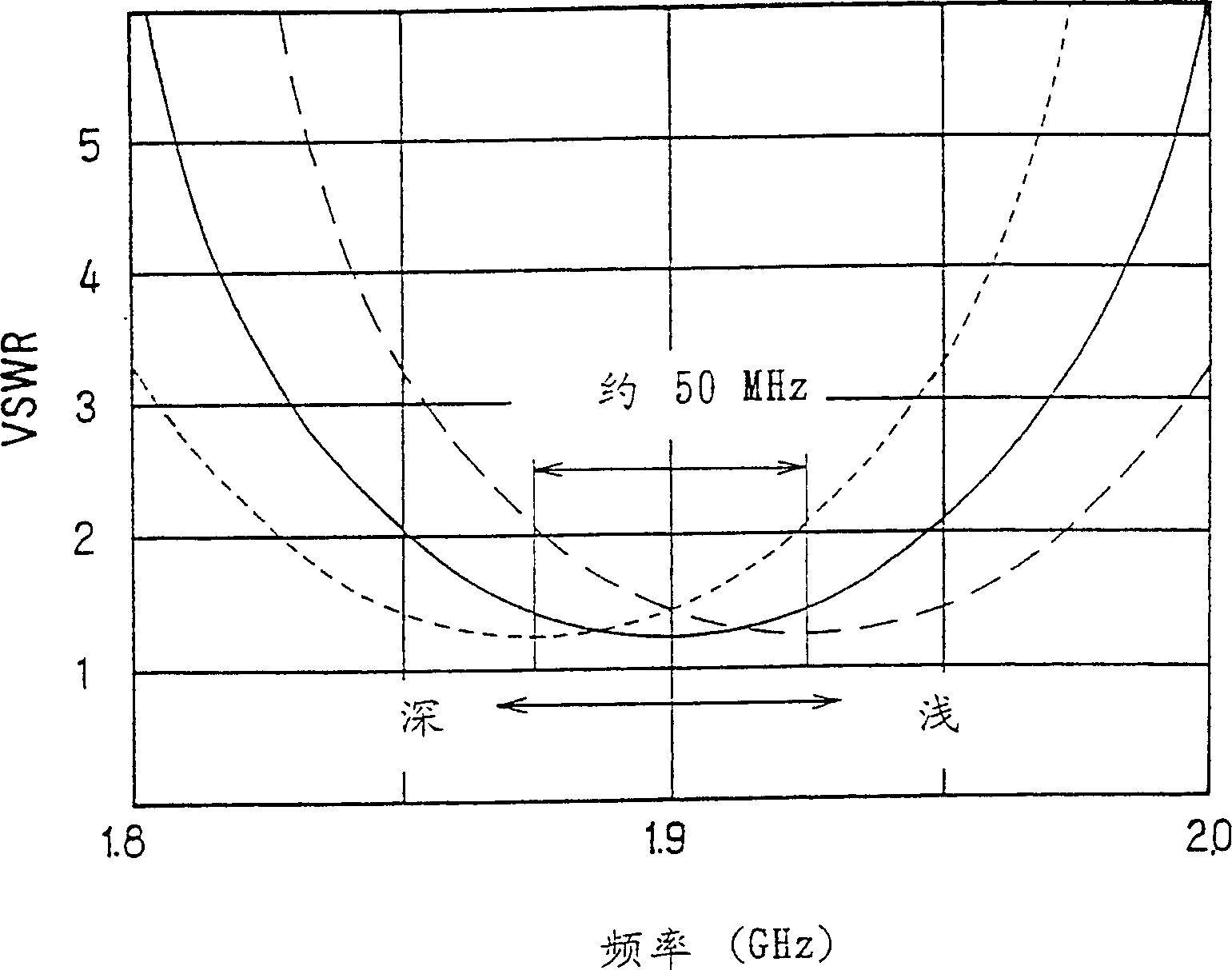Antenna for mobile radio communication
一种移动无线、天线的技术,应用在天线、单独通电的天线阵列、谐振天线等方向,能够解决天线总长度变长、结构复杂、妨碍基地台小型化和低成本化等问题,达到小型结构、特性一致的效果
- Summary
- Abstract
- Description
- Claims
- Application Information
AI Technical Summary
Problems solved by technology
Method used
Image
Examples
no. 1 Embodiment
[0050] Fig. 1(a) is a perspective view of a first embodiment of an antenna for mobile radio communication according to the present invention, and Fig. 1(b) is a sectional view taken along line A-A of Fig. 1(a).
[0051] As shown in FIG. 1, the coaxial feeder 1 is composed of an outer conductor 1a and an inner conductor 1b arranged in a concentric circle with a dielectric sandwiched between them. The inner conductor 1b extends upward by about 1 / 4 wavelength from the upper end 1c of the outer conductor 1a. And formed. The antenna element 3 is constituted by the extended inner conductor 1b. On the outside of the coaxial feeder 1 , a cylindrical metal tube 2 made of brass having a wavelength of 1 / 4 is arranged with one end connected to the upper end 1 c of the outer conductor 1 a. At the open end of the metal pipe 2, a female thread 2b is formed on a part of the inner periphery thereof by tapping. An insulating packing 4 made of a fluororesin (for example, polytetrafluoroethylen...
no. 2 Embodiment
[0064] image 3 It is a side view of the second embodiment of the mobile wireless communication antenna of the present invention.
[0065] Such as image 3 As shown, the second dipole antenna 8 is connected to the bottom of the first dipole antenna 7 , and the third dipole antenna 9 is connected to the bottom of the second dipole antenna 8 . This constitutes a straight array antenna.
[0066] exist image 3 Here, since the first dipole antenna 7 has the same structure as that of the above-mentioned first embodiment, its description will be omitted. The second and third dipole antennas 8 and 9 are configured as follows. That is, at a predetermined position of the outer conductor of the coaxial feeder 10, a feed point is formed by providing a circular slit 10x having a width of 3 mm. Outside the outer conductor of the coaxial feeder 10, a pair of 1 / 4 wavelength brass cylindrical metal tubes 11 are arranged on both sides of the annular slit 10x. At this time, the opposite e...
no. 3 Embodiment
[0076] Fig. 6(a) is a cross-sectional view of a third embodiment of the antenna for mobile radio communication according to the present invention, and Fig. 6(b) is a longitudinal sectional view thereof. As shown in FIG. 6 , the coaxial feeder 15 is composed of an outer conductor and an inner conductor concentrically arranged with a dielectric therebetween, and the inner conductor is formed to extend upward by about 1 / 4 wavelength from the upper end 15a of the outer conductor. An internal conductor formed by extending this constitutes the antenna element 16 . On the outside of the coaxial feeder 15, a metal tube 18 made of brass having a wavelength of about 1 / 4 is arranged in a state where one end 17a is connected to the upper end 15a of the outer conductor. The other end 18b of the metal pipe 18 is supported by inserting a gasket 16a made of fluororesin (for example, polytetrafluoroethylene) between the inner wall and the coaxial feeder 15 at the open end 18b of the metal pipe...
PUM
 Login to View More
Login to View More Abstract
Description
Claims
Application Information
 Login to View More
Login to View More - R&D
- Intellectual Property
- Life Sciences
- Materials
- Tech Scout
- Unparalleled Data Quality
- Higher Quality Content
- 60% Fewer Hallucinations
Browse by: Latest US Patents, China's latest patents, Technical Efficacy Thesaurus, Application Domain, Technology Topic, Popular Technical Reports.
© 2025 PatSnap. All rights reserved.Legal|Privacy policy|Modern Slavery Act Transparency Statement|Sitemap|About US| Contact US: help@patsnap.com



